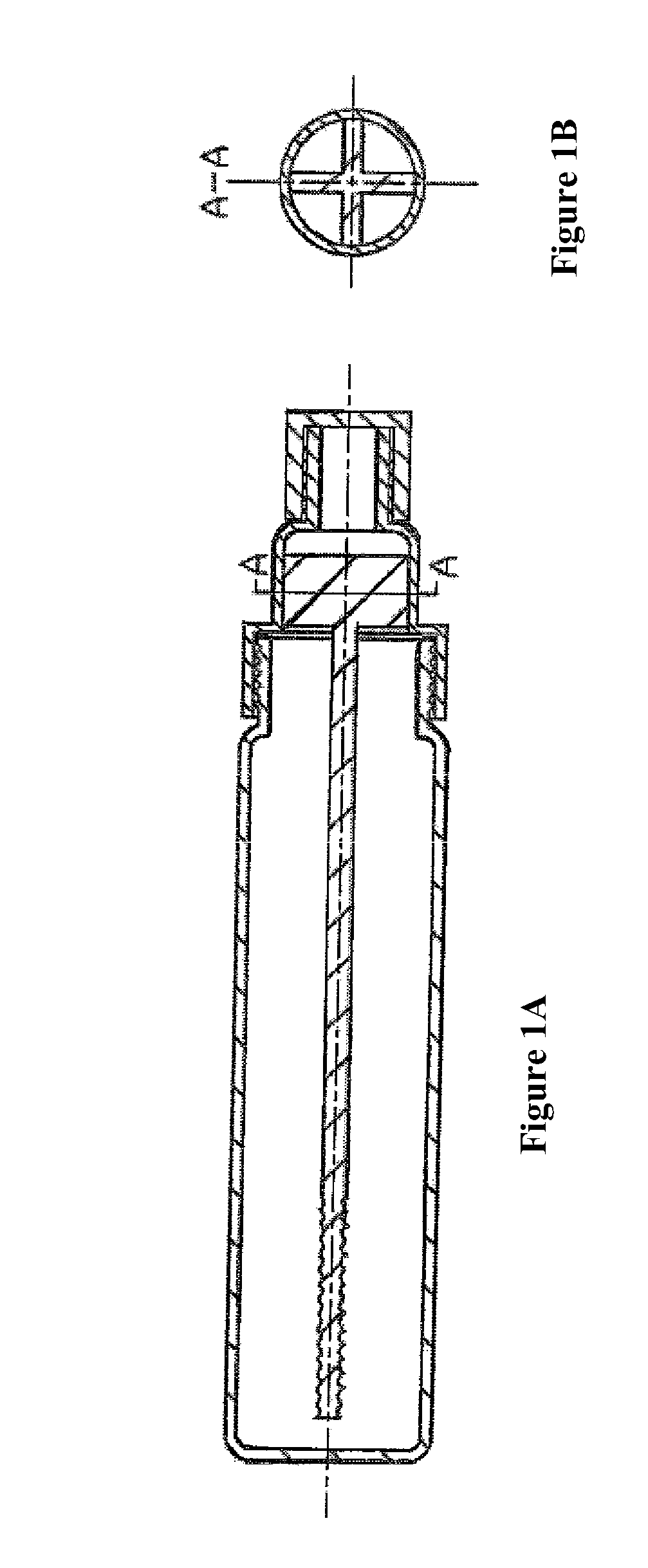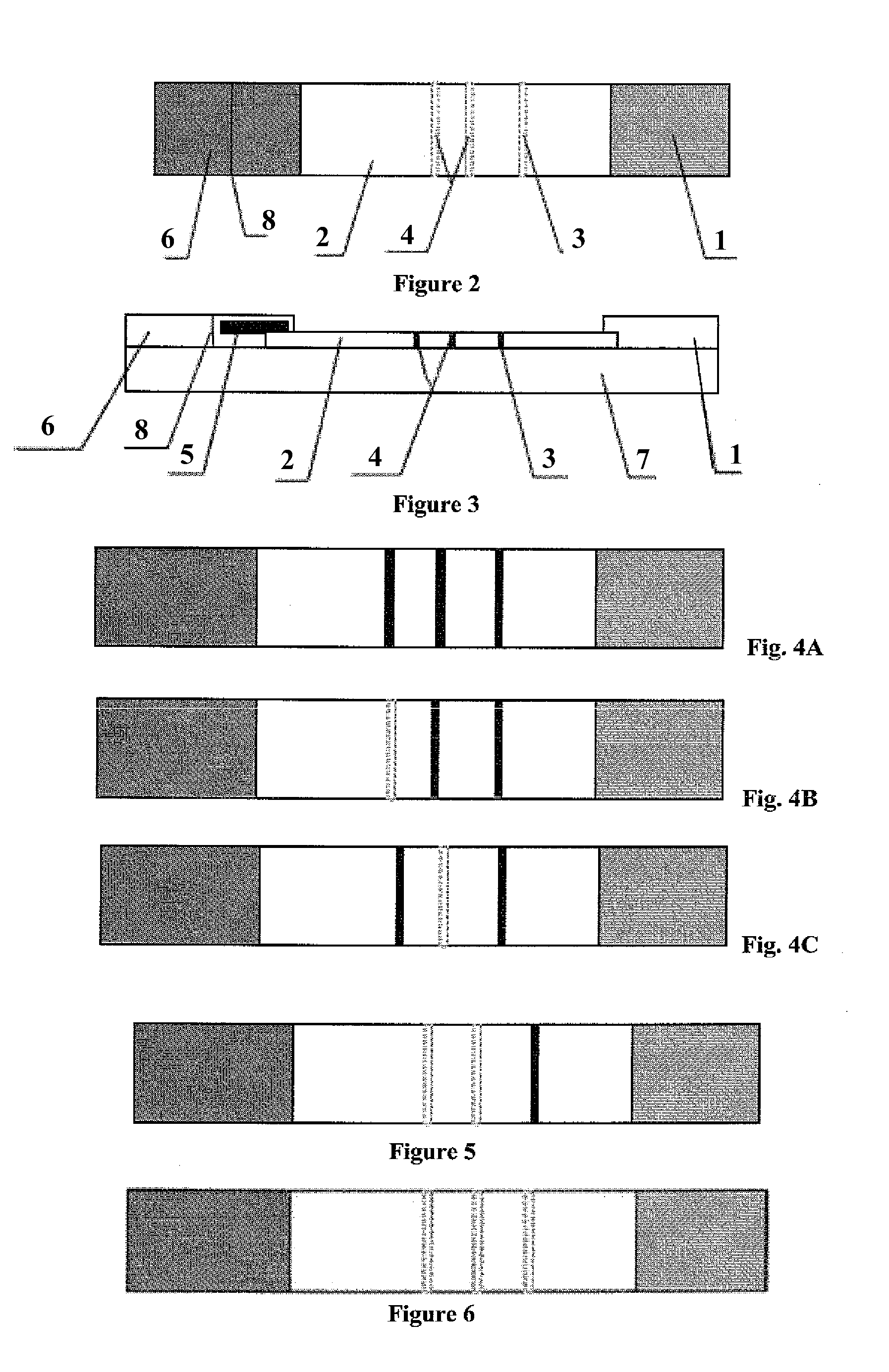Methods and device for the detection of occult blood
a technology of occult blood and detection method, applied in the direction of instruments, chemical/physical/physical-chemical processes, chemistry apparatus and processes, etc., can solve the problems of diet control, serious patient compliance problems, and general limited sensitivity of chemical tests,
- Summary
- Abstract
- Description
- Claims
- Application Information
AI Technical Summary
Benefits of technology
Problems solved by technology
Method used
Image
Examples
example 1
Preparation of Monoclonal Antibodies Against Hemoglobin and Transferrin
[0054]BALB / c mice were immunized with purified human hemoglobin for three months to induce antibody production. After the antiserum titer reached a desired level, mice were sacrificed. Isolated spleen cells were used for hybridoma fusion with cells of the SP20 line. A pair of hybridoma cell lines, Hb10E11G12 and Hb2H11D12, were isolated and used to produce ascites fluid from BALB / c mice. Anti-hemoglobin antibodies were then purified from ascites fluid and used in sandwich immunoassays for detecting hemoglobin.
[0055]Anti-transferrin antibodies were produced following a similar procedure. A matching pair of hybridoma cell lines, TF31E5G1 and TF32A2G1, were isolated and used in sandwich immunoassays for detecting transferrin.
example 2
Preparation of Gold Particles and Antibody Conjugate
[0056]Antibody-conjugated gold particles were chosen as the detection means in a lateral flow immunoassay. A colloidal gold particle solution was prepared by the reduction of gold chloride with sodium citrate at the boiling point of the mixture. A pink to purple colored colloidal gold solution with gold particles of a size around 10 to 40 nm was used in preparing gold-antibody conjugates. One of the paired antibodies was used to coat gold particles at a pH value close to the pI value of the antibody. BSA and PEG were used to block the leftover binding sites on the gold particles, to wash and concentrate the conjugated gold-antibody solution. A pad, typically a pad made of fiber glass or rayon, was submerged in the conjugated gold-antibody solution and was dried afterwards so that the gold-antibody conjugates were deposited in the pad.
example 3
Test Lines and Control Line
[0057]A nitrocellulose membrane with an average pore size of around 5 to 20 μm was chosen as the test membrane. The selected antibodies were immobilized on the membrane at the specified test line zones. A control line zone was also included in test membrane to assure the physical performance of the test, where a goat anti-mouse-IgG antibody was immobilized.
PUM
 Login to View More
Login to View More Abstract
Description
Claims
Application Information
 Login to View More
Login to View More - R&D
- Intellectual Property
- Life Sciences
- Materials
- Tech Scout
- Unparalleled Data Quality
- Higher Quality Content
- 60% Fewer Hallucinations
Browse by: Latest US Patents, China's latest patents, Technical Efficacy Thesaurus, Application Domain, Technology Topic, Popular Technical Reports.
© 2025 PatSnap. All rights reserved.Legal|Privacy policy|Modern Slavery Act Transparency Statement|Sitemap|About US| Contact US: help@patsnap.com



